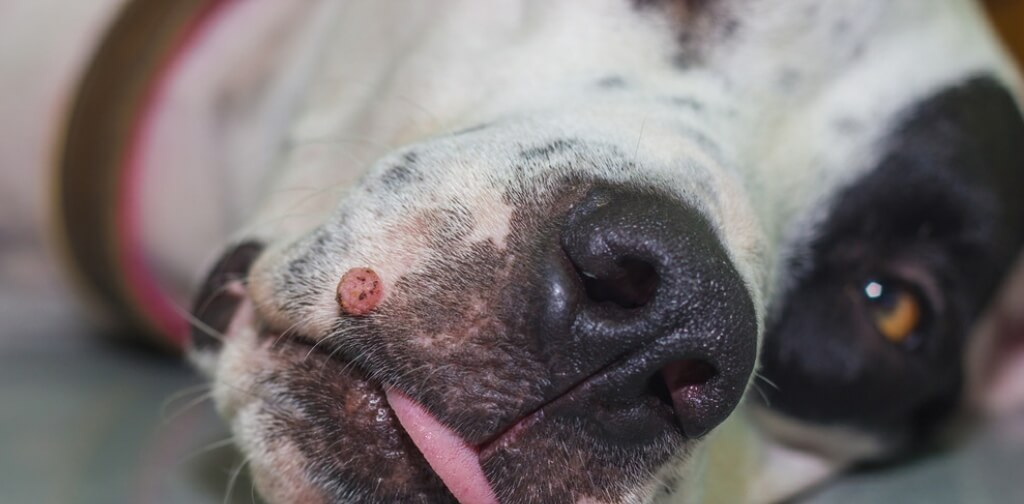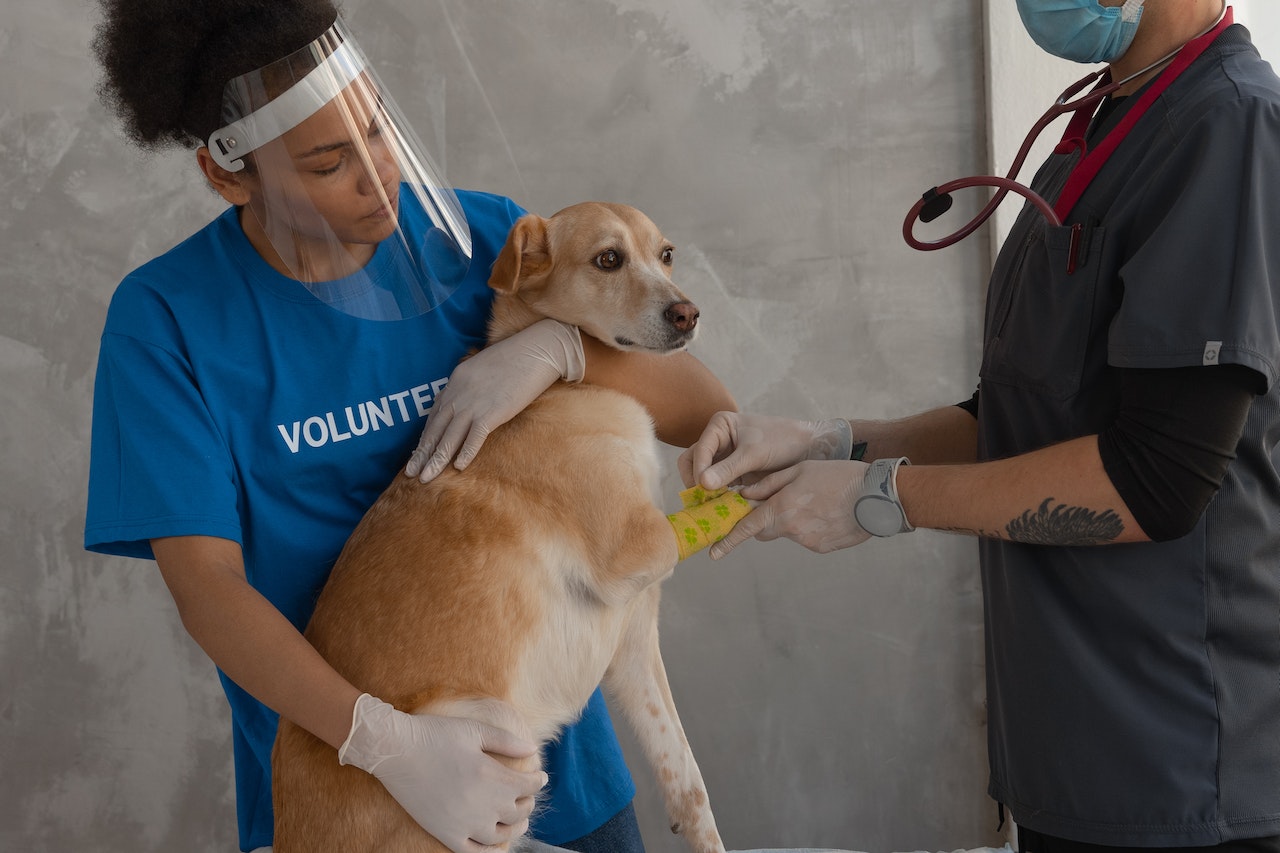
Canine viral papillomatosis is a serious condition does it not? The term itself is an abbreviation for warts (papillomas) in dogs. Although a diagnosis of warts in dogs is not a major issue the condition deserves your attention, particularly so you don’t mistake warts on dog with other less threatening illnesses.
Every dog is susceptible to warts, however they are more frequent in dogs that suffer from immunosuppression or spend much time around other dogs. Warts are common among puppies on their mouths, whereas the skin of the older dogs tends to be more affected. Certain breeds may be more at risk of developing dog warts. These include:
- Shar-Pei
- Cocker Spaniels
- Miniature Schnauzers
- Kerry Blue Terriers
- Pugs
Signs and symptoms of dog warts

Warts on dogs typically appear as a small head of cauliflower. However, different, less common types exist, such as an inverted, papilloma (usually an elongated lump with an oblique dot) and the dark, scaly, scaly areas of skin with an irregular, uneven surface.
Warts can form in and around the mouth of a dog and around the eyes between the toes and any place on the body.
Certain dogs get one or a couple of warts so tiny they’re difficult to notice. In other cases, complete areas of the dog’s body could be covered in warts of various dimensions. Warts around and in the dog’s mouth can cause difficulty for dogs to eat or drink normally. Warts on the feet of dogs can lead to lameness, especially in the event that the area has been injured or gets infected.
What causes dog warts?

Warts in dogs can be caused by an infection with papillomaviruses. Different types of canine papillomaviruses have been discovered and each is able to produce a specific type that is affected (for instance, warts that occur in the mouth and around it versus warts that affect those on the feet).
Warts on dogs can be transmitted to other canines, but not humans or other animals. After a dog has been affected by one form of papillomavirus immune to that particular strain, but not other types.
Papillomavirus can remain in the air for weeks and it’s also possible for dogs with warts to be able to leave the virus in a certain location, which could lead to another dog being infected from that area later. Papillomaviruses are transmitted through cracks in the skin. An infection occurs when a dog’s immune system isn’t able to fight the virus until it has a chance to take over. It usually takes between four and six weeks to develop warts after a dog has been suffering from the papillomavirus.
How veterinarians diagnose dog Warts

In the majority of instances, a vet can identify a dog wart using only a physical exam. If there are questions regarding what the cause is, the vet may take a portion of the tissue and forward the sample to an expert pathologist to be identified.
Treating dog warts
Warts usually disappear on their own after six to eight weeks, or when the dog gains immunity to the virus. There are instances that veterinary intervention is needed:
- Sometimes, dog warts can be so they are numerous, huge or found in locations that cause symptoms like lameness, difficulties drinking or eating or eye irritation.
- Warts can rupture or become infected by bacteria.
- In rare instances, warts that do not disappear on their own may transform into cancerous tumors. In most cases, warts persist for longer than 3 to 5 months must be treated.
- dogs who are on immunosuppressive medication or have other serious health issues may not be able to rid themselves of warts with no help.
- If only one or a few of warts cause concern, removal by surgery is the best option. This is done using lasers, scalpels, or by cryosurgery (using extreme cold to eliminate this wart).
The need for medication is often triggered in cases where a lot of warts cause issues for dogs. It’s not easy to know the efficacy of these treatments as most warts in dogs go away by themselves. But, the following methods have been tested by vets:
- Interferon Oral or injection-able drug that increases the immune system.
- Imiquimodis A topical antiviral, antitumor and medicine
- Cimetidine: an oral medicine that could have a positive impact upon the immunity system
- Azithromycin: Treatment with this oral antibiotic was efficient in a single study.
- Immunostimulation providing a vaccine made by a dog’s warts, or even immunooregulin (a suspension of dead Propionibacterium acnes bacteria) could stimulate your immune system fight to the virus.
- Reducing immunosuppression if feasible, stop or decreasing the dosage of immunosuppressive medications and actively treat any ailments which have an adverse impact on the dog’s immune system.

Inhibiting from the Spread of Warts in Dogs
There are several actions you can take to keep your dog safe against developing warts. It is important to not allow your dog to play with or come into contact with dogs with warts that are visible. If the protective qualities the skin of your dog has been damaged (from burns, rashes or other.) or the immune system isn’t working properly, do not visit areas in which dogs gather, like doggy daycares, parks and kennels.
If, despite all every effort you make, the dog continues to develop warts, keep them away from other dogs until warts are gone.